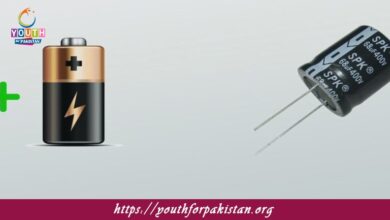Covalent Radii MDCAT MCQs with Answers

Welcome to the Covalent Radii MDCAT MCQs with Answers. In this post, we have shared Covalent Radii Multiple Choice Questions and Answers for PMC MDCAT 2024. Each question in MDCAT Chemistry offers a chance to enhance your knowledge regarding Covalent Radii MCQs in this MDCAT Online Test.
The covalent radius of an element is defined as:
a) Half the distance between two nuclei of identical atoms joined by a single bond
b) The full distance between two nuclei of different atoms joined by a double bond
c) The distance between the nucleus and the outermost electron
d) The distance between the nucleus and the inner electron
As you move down a group in the periodic table, the covalent radius generally:
a) Decreases
b) Increases
c) Remains the same
d) First increases, then decreases
The covalent radius of an atom is affected by:
a) The number of protons in the nucleus
b) The number of electrons in the outermost shell
c) Both a and b
d) Neither a nor b
Which element has the smallest covalent radius?
a) Hydrogen
b) Carbon
c) Oxygen
d) Neon
Covalent radii are typically measured in:
a) Nanometers
b) Picometers
c) Angstroms
d) Meters
As you move from left to right across a period, the covalent radius generally:
a) Increases
b) Decreases
c) Remains the same
d) First decreases, then increases
The covalent radius of an element can be estimated by:
a) Measuring the distance between two nuclei in a covalent bond
b) Calculating the atomic mass
c) Using the ionization energy
d) Determining the density of the element
Which element has the largest covalent radius among the following?
a) Sodium
b) Potassium
c) Lithium
d) Cesium
The covalent radius of an atom in a molecule is generally larger than its:
a) Ionic radius
b) Atomic radius
c) Metallic radius
d) Van der Waals radius
In which type of bond does the covalent radius typically become smaller?
a) Single bond
b) Double bond
c) Triple bond
d) All of the above
Which of the following elements has the largest covalent radius?
a) Fluorine
b) Chlorine
c) Bromine
d) Iodine
The covalent radius of an atom is inversely proportional to:
a) The number of electrons
b) The number of protons
c) The atomic number
d) The atomic mass
The covalent radius of elements in the same group:
a) Decreases down the group
b) Increases down the group
c) Remains the same down the group
d) First decreases, then increases down the group
The covalent radius of a molecule with multiple bonds is typically:
a) Larger than that with single bonds
b) Smaller than that with single bonds
c) Same as that with single bonds
d) Unpredictable
The covalent radius of carbon in methane (CH₄) is:
a) Smaller than in ethylene (C₂H₄)
b) Larger than in ethylene (C₂H₄)
c) The same as in ethylene (C₂H₄)
d) Not measurable in methane
Which factor does NOT affect the covalent radius of an atom?
a) Nuclear charge
b) Electron shielding
c) Bonding type
d) Electron affinity
The covalent radius of an ion is generally:
a) Larger than its neutral atom
b) Smaller than its neutral atom
c) Equal to its neutral atom
d) Unrelated to its neutral atom
The covalent radius of oxygen in H₂O is:
a) Larger than in O₂
b) Smaller than in O₂
c) Equal to in O₂
d) Not measurable in H₂O
Which element would you expect to have a smaller covalent radius, phosphorus or nitrogen?
a) Phosphorus
b) Nitrogen
c) Both have the same radius
d) It depends on their oxidation state
The covalent radius of a chlorine atom in HCl is:
a) Larger than in Cl₂
b) Smaller than in Cl₂
c) The same as in Cl₂
d) Not applicable
For isoelectronic species, the covalent radius:
a) Increases with increasing atomic number
b) Decreases with increasing atomic number
c) Remains constant
d) Varies unpredictably
The covalent radius of an atom is typically determined by:
a) X-ray diffraction
b) Mass spectrometry
c) Atomic absorption spectroscopy
d) NMR spectroscopy
In a molecule with a central atom having expanded octet, the covalent radius of the central atom:
a) Decreases
b) Increases
c) Remains the same
d) Is not measurable
The covalent radius of iodine compared to bromine is:
a) Smaller
b) Larger
c) The same
d) Not measurable
Which of the following elements has the largest covalent radius?
a) Beryllium
b) Magnesium
c) Calcium
d) Strontium
The covalent radius of sulfur compared to oxygen is:
a) Smaller
b) Larger
c) The same
d) Not measurable
In a compound where carbon forms a triple bond, the covalent radius of carbon is:
a) Larger than in a single bond compound
b) Smaller than in a single bond compound
c) The same as in a single bond compound
d) Not applicable
Covalent radii are typically measured in:
a) Millimeters
b) Micrometers
c) Nanometers
d) Picometers
The covalent radius of nitrogen in ammonia (NH₃) is:
a) Larger than in N₂
b) Smaller than in N₂
c) The same as in N₂
d) Not measurable in NH₃
The covalent radius of an element in a molecule is generally:
a) Larger than in its atomic state
b) Smaller than in its atomic state
c) The same as in its atomic state
d) Not measurable in a molecule
The covalent radius of an atom generally increases with:
a) Increasing nuclear charge
b) Increasing number of electron shells
c) Increasing number of valence electrons
d) Increasing ionization energy
The covalent radius of an element in the second period compared to an element in the third period is:
a) Larger
b) Smaller
c) The same
d) Unpredictable
For elements with similar electronegativity, the covalent radius generally:
a) Increases with increasing atomic number
b) Decreases with increasing atomic number
c) Remains constant
d) Varies unpredictably
The covalent radius of silicon is:
a) Larger than that of carbon
b) Smaller than that of carbon
c) The same as that of carbon
d) Not measurable
The covalent radius of an atom in a molecule can be affected by:
a) Bond order
b) Hybridization
c) Bond length
d) All of the above
For an isoelectronic series, the covalent radius:
a) Increases with increasing nuclear charge
b) Decreases with increasing nuclear charge
c) Remains constant with increasing nuclear charge
d) Varies unpredictably with nuclear charge
The covalent radius of an atom can be estimated using:
a) X-ray crystallography
b) NMR spectroscopy
c) Mass spectrometry
d) UV spectroscopy
The covalent radius of bromine compared to chlorine is:
a) Smaller
b) Larger
c) The same
d) Not measurable
The covalent radius of the central atom in a molecule is influenced by:
a) The nature of the substituents
b) The overall molecular geometry
c) The type of bonds formed
d) All of the above
The concept of covalent radius is most relevant in:
a) Ionic compounds
b) Molecular compounds
c) Metallic compounds
d) Network solids
If you are interested to enhance your knowledge regarding Physics, Chemistry, Computer, and Biology please click on the link of each category, you will be redirected to dedicated website for each category.




